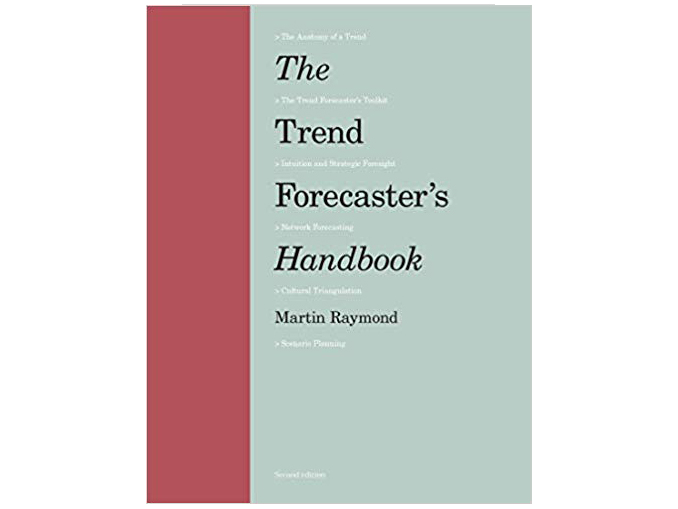Reviewed by Kay Corry Aubrey, User Experience Researcher, Usability Resources Inc, Bedford, MA, Kay@UsabilityResources.net
The Trend Forecaster’s Handbook is a highly readable and beautifully designed book that provides a practical framework for understanding and reacting to cultural trends. This review is a sneak preview of the second edition. The original edition, which was published in 2010, is considered the definitive source for learning about trends, strategy, and innovation thinking.
Martin Raymond is a journalist, BBC commentator, and cofounder of The Future Laboratory, which is an international firm specializing in strategic foresight. At the beginning of the foreword Raymond tells us, “as a long-time student of the future, I have learned one thing about predicting it: that whatever you predict is unlikely to happen. And if it does, it will probably happen along those lines that you least expect!” While Raymond acknowledges that you cannot predict the future, this book shows the skills a researcher needs to have to recognize, study, and respond to trends in any domain.
A trend manifests in many forms. For example, a trend can be a fashion item, a product, or something ephemeral such as desire or a mood. We adopt a trend because we receive social, cultural, or emotional value by identifying with it. Taking part in a trend gives us a sense of belonging because it’s something we share with friends, family, or people we admire.
Researching trends requires a deep and rigorous inquiry into the “who, what, when, where, and why” around the trend. According to Raymond, the researcher needs to develop “a set of practical, intuitive, observational, and quantitative tools, skills, and strategies that allow you to assess the future needs and consumption patterns of the many by studying and empathizing with the activities of the few.”
Qualitative skills and a finely-honed intuition are the hot molten core of the trend researcher’s skillset. One effective technique is “Cultural Brailling” where the researcher seeks to detect bumps in the culture like bumps on a page. With Cultural Brailling you ingest information through your senses, noticing what you see, hear, feel, taste, and smell as you explore a topic. This technique was developed by Faith Popcorn, creator of the annual Popcorn Report on trends and a well-known futurist.
Trends follow a predictable path along the “Diffusion of Innovation” curve from the innovator, to early adopters, to early majority, to late majority, and finally to laggards. Raymond describes skills for detecting weak signals on the horizon that indicate new developments by following the activities of innovators and influencers. He devotes an entire chapter to understanding and using networks in the forecasting process, exploring various types of human networks, the hidden laws of how they operate, and how to leverage networks to detect and monitor trends. “Weak tie” networks, that contain members from diverse backgrounds, provide the most value for study because they represent a wider range of viewpoints and are less prone to peer pressure.
Throughout the trend research process, Raymond recommends building a library of evidence and verifying your insights through triangulation. He shows how to systematically collect data through photographic studies, polls, observational research, and other techniques. He shows the steps for setting up and running ideation workshops that involve clients in synthesizing insights. Raymond devotes an entire chapter to Scenario Planning, outlining approaches to guide stakeholders through the possible, probable, and preferable outcomes an organization faces as a result of trends.
As Raymond notes, the forecaster’s skills are “a set of practical, intuitive, observational, and qualitative tools, skills, and strategies.” The Trend Forecasters Handbook is a valuable reference for any qualitative researcher, regardless of whether you are focused on the future.


Be the first to comment